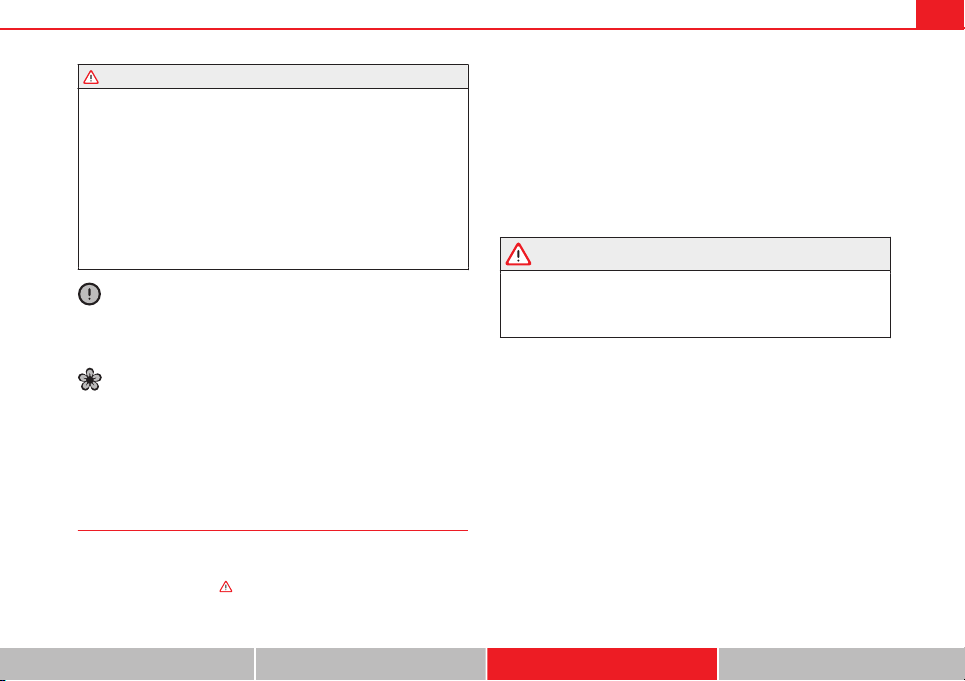Loading ...
Loading ...
Loading ...

281Checking and refilling levels
WARNING (Continued)
● Never pour service fluids over the engine. These fluid may ignite hot
engine parts and cause injuries.
● If it is necessary to work on the fuel system or the electrical system,
please follow the instructions below:
– Always disconnect the vehicle battery. When disconnecting the
battery, ensure that the vehicle is unlocked otherwise the anti-theft
alarm will be triggered.
– Never work close to heaters, heat sources or places exposed to
flames or sparks.
● Always keep a recently serviced and perfectly working fire extin-
guisher close by.
CAUTION
When refilling or changing service liquids, ensure that you put the liquids
into the right tank. Making a mistake when refilling could cause serious
malfunctions and damage the engine!
For the sake of the environment
Service fluids leaks are harmful to the environment. For this reason you
should make regular checks on the ground underneath your vehicle. Take
the vehicle to a specialised workshop to be checked if you see stains, oil or
other fluids on the ground. Collect any spilt service fluids and allow a pro-
fessional to dispose of them.
Preparing the vehicle for work in the engine compartment
Checklist
Carry out the operations below in the order indicated before starting work in
the engine compartment
⇒
:
● Park the vehicle on an even and solid surface.
● Press and hold the brake pedal until the vehicle comes to a standstill.
● Connect the electronic parking brake ⇒ page 185.
● Move the selector lever to its intermediate position or to P ⇒ page 176.
● Stop the engine and remove the key from the ignition ⇒ page 172.
● Wait for the engine to cool down.
● Always keep children and other people far from the engine compart-
ment.
● Ensure that the vehicle can not move off unexpectedly.
WARNING
Ignoring this checklist, drawn up for your own safety, could result in seri-
ous injury.
● Always complete the operations given in the checklist and observe
the general rules of safety.
Safety First Operating instructions Practical Tips Technical Specifications
Loading ...
Loading ...
Loading ...